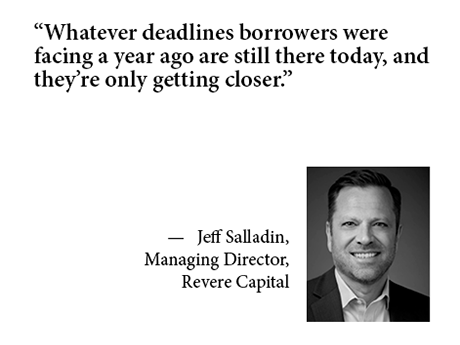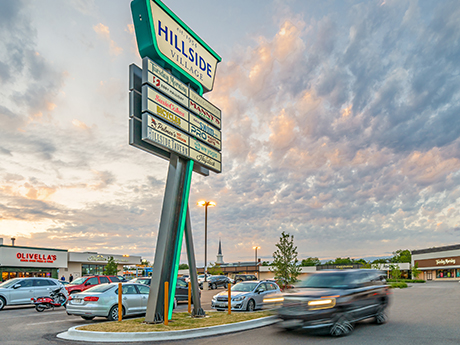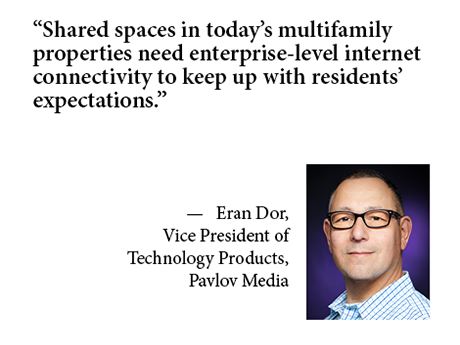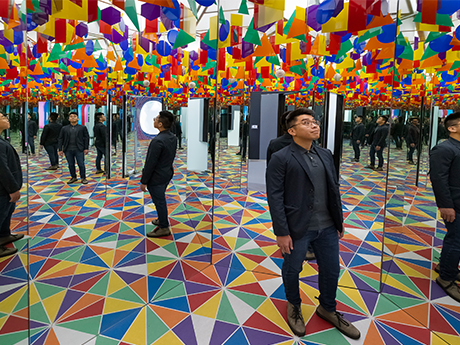CHARLOTTE, N.C. — Inland ports are a growing transportation option in the national supply chain. These facilities provide users — including automotive suppliers, retailers, manufacturers and agricultural producers — an option to import and export their wares to seaports via shipping containers by rail as opposed to trucking their products directly to a port terminal. One of the more prominent inland ports in the country is Inland Port Greer in Upstate South Carolina. The facility’s anchor client is BMW, which operates its mega manufacturing campus in nearby Spartanburg, S.C. Class I freight railroad operator Norfolk Southern Corp. provides rail services from the inland port to the Port of Charleston. Brian Gwin, senior industrial development manager for Norfolk Southern, said that when the railroad operator and the South Carolina Ports Authority (SCPA) established Inland Port Greer in 2013, it was apparent almost immediately that they had a behemoth on their hands. “We knew it was going to be mostly BMW, but we designed Inland Port Greer for 50,000 lifts a year,” said Gwin, referring to the number of shipping containers moved on or off Norfolk Southern trains at the inland port. According to multiple media outlets, the inland port exceeded 100,000 …
Features
Last fall’s ebullience over the Federal Reserve’s likelihood of cutting the federal funds rate early and frequently in 2024 quickly faded as inflation remained too high for the Fed’s liking. Wall Street traders who make wagers on the Fed’s actions keep pushing their rate cut bets further into the year, according to CME Group, a derivatives marketplace. In early March, for example, nearly 75 percent of traders wagered on a rate cut in June. As of early June, less than 2 percent expected one. The most recent Fed meeting, on June 13, has confirmed this assumption that a rate cut is at least months away, if not longer. If and when the central bank cuts rates this year, the cost of capital is unlikely to approach the historically low levels of the last few years. As a result, the growing interest rate mantra of “higher for longer” may be finally convincing commercial property buyers and sellers to meet on pricing. New York-based research organization MSCI Real Assets recently noted that commercial property sales continued to slow in the first quarter of 2024 — a year-over-year decline of 16 percent to $78.9 billion. But it suggested that investors might be encouraged …
By Jake Ables, director of concrete promotion, Silvi Materials When choosing a pavement surface for large-scale industrial facilities, there are several different factors that developers may want to consider. Chief among those factors, in the context of our current construction economy, is sustainability. Current trends in the Mid-Atlantic warehouse markets, for example, are pushing developers, contractors and suppliers towards sustainable construction practices. We have seen evidence of this with the implementation of environmental product declarations (EPDs) that disclose the global warming potential (GWP) of building materials on various construction projects. The purpose of these documents is to quantify the environmental impacts of building materials. As the push for sustainability increases, it behooves developers to look for sustainable value when and where they can find it. Life Cycle Thinking As the push for sustainability intensifies over the coming years, property developers will see their priorities adjust to compensate for changing market conditions. While costs will always be at the forefront of concerns for developers, sustainability is becoming an ever-higher priority. So what does that mean for developers? We believe it means a shifting mindset toward sustainable value over costs. Concrete paving provides the life cycle value that developers are seeking …
Industrial Investors Are More Selective in Wake of Rising Interest Rates, Say InterFace Panelists
by John Nelson
CHARLOTTE, N.C. — Despite strong fundamentals and a plethora of buyers waiting to transact, the industrial sector is experiencing dwindling sales as the industry is still reeling from the impact of rising interest rates. The U.S. industrial sector recorded $82 billion in sales volume in 2023, a 46 percent year-over-year decline and the lowest sales volume in about six years, according to data from Matthews Real Estate Investment Services. Newmark tallies the first three months of the year totaling $16.9 billion in U.S. industrial sales volume, which would be the seventh consecutive quarter of annualized declines. Michael Brennan, co-founder, chairman and managing principal of Brennan Investment Group, said that the rising cost of debt inherently makes values a moving target even in a healthy sector like industrial real estate, especially with such a massive upswing in interest rates over a short time frame. “Interest rates are the No. 1 problem for real estate,” said Brennan. “Buyers and sellers can’t see eye to eye. And make no mistake, prices went down, though maybe not as much as we thought they would have.” The data backs Brennan up as the average price per square foot was recorded at $130 at the end …
By Taylor Williams Everybody loves a good underdog success story, but sometimes the Goliaths of the world just have too much going for them to get beat by the Davids. All retail owners worth their salt recognize the unique draws that boutique, original concepts bring to their shopping centers. But landlords’ fiduciary responsibilities often dictate that they bring in heavier proportions of national credit tenants that can afford top-dollar rents — all other factors being held equal. And in a market defined by (relatively) high costs of capital, low vacancy, healthy demand for space and rising operating expenses, established brands have the edge. “The market definitely favors national credit tenants that are well-financed and have hundreds if not thousands of locations,” says Will Majors, senior vice president in CBRE’s Austin market. “At minimum, it favors franchised locations with national corporate offices that support the franchisees.” According to data from CBRE, the direct availability rate for retail space in Dallas (not the metroplex as a whole) stood at 4.8 percent at the end of the first quarter, essentially unchanged from a year ago. In Austin, the availability rate currently clocks in at 3.4 percent, just 10 basis points higher on a …
Content PartnerDevelopmentFeaturesLeasing ActivityMidwestMultifamilyNortheastPavlov MediaSoutheastTexasWestern
How Developers Use Mix of Technology, Amenities to Attract Residents
The multifamily industry faces a major challenge. Final construction costs have grown 33 percent since 2019 interest rates and operational expenses are sky high; and rents may need to increase, where possible, to make deals feasible — an off-putting reality for residents. One developer solution is smaller apartments, which make units cheaper. There is also a push to add more common-space amenities that are both valuable and less costly to include. These features include rooftop spaces, green areas and decks. However, to make these spaces truly usable for today’s multifamily residents, it is important to make them technologically flexible and to offer easy internet connection. “The floor plans of most new-construction multi-dwelling units (MDUs) today are shrinking, and their amenities are expanding,” says Bryan Rader, president of MDU at networking and internet service company Pavlov Media. According to RentCafe, the average size of newly constructed apartment units fell by almost 6 percent in a decade, with half of that change occurring in the last year. Rader likens it to the “resort-style community” approach, where hotel rooms are small, and guests are encouraged to spend time everywhere else on the property. Similarly, multifamily developers create shared amenities such as comprehensive fitness …
By Blima Ehrentreu, founder and CEO, The Designers Group The urban real estate landscape is undergoing a remarkable transformation. With shifting work patterns and changing societal needs, design and development teams are working to convert underutilized office buildings into vibrant residential spaces. As office vacancy rates rise in cities like New York, San Francisco and Chicago, this challenge drives creative solutions that blend design innovation, virtual planning and sustainability. This dynamic landscape provides an exciting platform to reimagine urban living and meet the evolving demands of residents. At The Designers Group (TDG), we embrace the concept of adaptive reuse. Rather than tearing down old buildings and starting from scratch, we see value in maintaining existing structures and repurposing them in innovative ways. This approach not only aligns with our commitment to sustainability but also offers a chance to preserve the character and history of urban landscapes. Industrial elements such as exposed brick, concrete pillars and high ceilings can be integrated into residential designs, creating unique and compelling aesthetics. This focus on adaptive reuse means less waste and smaller carbon footprints, which is critical in today’s environmentally conscious world. By working with what already exists, we minimize the need for new …
InterFace Panel: Workforce Housing Growth Limited by Lack of Incentives for Developers, Investors
by Jeff Shaw
ATLANTA — Workforce housing is a hot topic in the multifamily sector. The apartments are designed to serve middle-class renters, with no government subsidies such as tax credits and fewer of the bells and whistles associated with luxury projects. The combination of the spike in the cost of living, elevated interest rates and a low housing supply has made it difficult for middle-income households across the nation to buy or rent housing. Theoretically this means there is a large market to serve by building workforce housing communities. However, while some developers, owners and investors see a world of new opportunities in this sector, others are more skeptical that workforce housing projects can be developed on a larger scale without more support from federal, state and local governments. This was the topic of discussion during a panel titled “Who is building, developing and investing in the Southeast?” at the inaugural InterFace Affordable Housing Southeast conference. The event was held on Thursday, May 9 at the Cobb Galleria Center in Atlanta. France Media’s InterFace Conference Group and Southeast Multifamily & Affordable Housing Business magazine hosted the conference, which drew about 170 industry professionals. Workforce housing targets the missing middle Workforce housing is designed to …
— By Anthony Sanchez, design director and principal, Nadel Architecture + Planning — Consumers are heading back to the shopping mall, which is great news for retail owners, operators and tenants that rely on in-person sales and experiences as part of their respective business models. According to Placer.ai, February and March of this year saw a steady rise in foot traffic at malls nationally. Indoor malls sit just 5 percent below their pre-pandemic foot traffic levels, while open-air shopping malls surpassed 2019 levels for the first time since the pandemic. The trend marks an incredible resiliency for the retail space, especially as financing and inflationary issues loom over the economy. But with all these shoppers coming back to the mall, the question is: will they recognize it? Anchors Entering a New Era With news of some larger retailers like Macy’s and the Dollar Store closing locations en masse, developers are chomping at the bit to reimagine those spaces. There is exciting potential to recreate them within malls in ways that enhance the overall shopping experience for consumers and attract new foot traffic – all to the benefit of the existing retailers at the shopping center. The result might be a …
There are a common set of headwinds — such as high construction costs and interest rates — facing the commercial real estate industry at large. But affordable housing development and operations also come with a unique set of challenges all their own. Despite this, panelists at the InterFace Affordable Housing Southeast conference, held May 9 at the Cobb Galleria Centre in Atlanta, expressed an optimistic outlook for the sector. Closing out the day’s events, speakers on the “Southeast Regional Housing Authorities & Legal Update” panel shared strategies for surviving within the current affordable housing landscape and highlighted the importance of planning ahead to succeed in the sector. The devil’s in the details Most crucial to navigating the sometimes tumultuous waters of affordable housing is engaging in thorough — even painstaking — preparation, concurred each of the panelists. This is especially true given the current macroeconomic climate and its difficulties. When asked how her organization confronts these challenges, Yvonda Bean, chief executive officer with Columbia Housing, identified an emphasis on facilitating communication within the project team for planning purposes. More specifically, Bean reported that Columbia Housing connects the “general contractor with the architect to work on design plans” early on, such that when …











